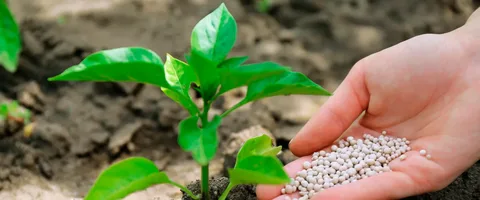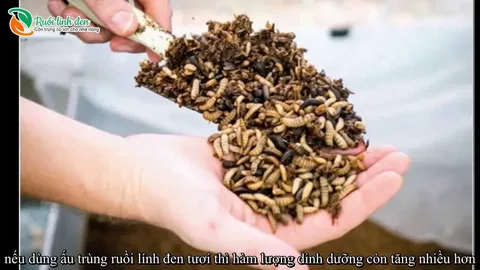#insectbasedfertilizer
Explore tagged Tumblr posts
Text
Insect-based Fertilizer Market gaining traction with eco-conscious agricultural strategies

Introduction: Eco-Consciousness Fuels Market Shift
The Insect-based Fertilizer Market is gaining traction as eco-conscious agricultural strategies gain mainstream acceptance among global farmers and agribusinesses. As the planet grapples with climate change, soil degradation, and biodiversity loss, traditional chemical fertilizers are increasingly under scrutiny. In contrast, insect-based alternatives are emerging as a promising solution for eco-friendly farming, aligning with sustainability goals and regenerative agricultural models.
Why Insect-Based Fertilizers?
Insect-based fertilizers are derived from the frass (excreta) of insects like black soldier flies, mealworms, and crickets. These organisms are fed organic waste and convert it into high-value nutrient sources, which are rich in nitrogen, phosphorus, and potassium—critical for plant growth.
What makes insect-derived fertilizers unique is their compatibility with organic farming standards, low ecological footprint, and contribution to circular economies. Unlike synthetic inputs, they are biodegradable, support soil microbial health, and provide slow-release nutrition, reducing the risk of leaching and runoff.
Eco-Conscious Trends Reshaping Agriculture
Environmental sustainability is now central to decision-making in agriculture. Climate change mitigation, carbon sequestration, and reduced dependency on fossil fuel-derived products are top priorities for both policy-makers and farmers.
In this context, insect-based fertilizers offer tangible environmental advantages:
Lower greenhouse gas emissions during production compared to synthetic fertilizers.
Utilization of organic waste as feedstock, reducing landfill pressure.
Improvement of soil health through increased microbial activity and organic matter.
Consumer preferences are also playing a role. The demand for clean-label, chemical-free food is pushing growers to explore eco-conscious cultivation practices, further accelerating the adoption of insect-derived inputs.
Market Dynamics and Global Growth
The rise in eco-friendly practices is reflected in the upward trajectory of the insect-based fertilizer market. Regions like Europe and North America are leading adoption due to stringent environmental regulations, government subsidies, and heightened public awareness. Meanwhile, Asia-Pacific is emerging as a high-growth zone, fueled by increasing population pressure, rising organic food consumption, and rapid innovation in waste-to-value technologies.
Key market drivers include:
Government incentives for sustainable agriculture and organic farming.
Improved awareness about the environmental costs of chemical fertilizers.
Technological advancements in insect farming and waste processing.
Startups and established agri-tech firms are actively investing in this space, scaling up insect biomass production, and developing new frass-based products customized for different crop needs and soil types.
Farmers' Perspective: Economic and Agronomic Benefits
From the farmer's standpoint, insect-based fertilizers provide a compelling value proposition. They offer comparable nutrient levels to traditional fertilizers, often with added benefits such as pest resistance and improved soil tilth.
Economically, localized production of insect-based fertilizers can reduce transportation and storage costs. Many small-scale farmers are even exploring on-farm insect composting models, creating a closed-loop system for waste management and soil nourishment.
Additional benefits for growers include:
Enhanced soil biodiversity and structure.
Reduced input dependency and better cost-efficiency.
Positive branding potential in organic and eco-labeled food markets.
Policy Support and Research Backing
Governments across the globe are beginning to recognize the promise of insect-based agriculture. Policies supporting organic certification, waste recycling, and sustainable nutrient inputs are opening new avenues for growth.
Research institutions and environmental organizations are backing these trends with studies that validate the effectiveness of insect fertilizers. Trials have shown comparable or superior yields for crops treated with frass compared to chemical fertilizers, especially in long-term soil fertility and pest resistance.
Initiatives are also underway to standardize product quality, establish safety benchmarks, and support farmer training in using insect-based inputs effectively.
Challenges and Future Opportunities
Despite its promise, the insect-based fertilizer market still faces some hurdles:
Regulatory ambiguity in several countries regarding the classification and use of insect-derived inputs.
Limited awareness among conventional farmers unfamiliar with the benefits.
Infrastructure challenges in scaling insect farming operations to meet growing demand.
However, these challenges are being addressed through investment, collaboration, and innovation. Public-private partnerships, farmer cooperatives, and policy dialogues are driving market education and ecosystem development.
In the future, the integration of insect fertilizers with precision agriculture, digital soil mapping, and smart nutrient delivery systems could further enhance their relevance and effectiveness.
Conclusion: A Sustainable Fertilizer Future
The insect-based fertilizer market stands at the intersection of environmental need and agricultural innovation. As the world pushes towards more sustainable, circular, and regenerative food systems, insect-derived nutrients are proving themselves as a resilient, eco-conscious alternative.
The industry’s growth is no longer niche—it is becoming a vital component of global agricultural strategy, driven by climate realities and the demand for ethical food production systems.
#insectbasedfertilizer#sustainablefarming#organicinputs#climatefriendlyfarming#ecofriendlyagriculture#circularagriculture#soilhealth#greenfarming#agribusiness#environmentalimpact#sustainableinputs
0 notes
Text
Insect-based Fertilizer Market Growth Driven by Rising Demand for Sustainable Agricultural Practices

The Insect-based Fertilizer Market is rapidly expanding as the world shifts towards more sustainable agricultural practices. With the challenges posed by traditional fertilizers, such as soil degradation and pollution, insect-based alternatives offer a powerful solution for the future of farming.
The Rise of Insect-based Fertilizers
Insect-based fertilizers are made from various insects, such as black soldier flies and mealworms. These insects are farmed using organic waste materials, and their bodies and excretions are processed to create nutrient-rich fertilizers. The demand for these fertilizers is growing as farmers seek more sustainable and eco-friendly solutions to meet global agricultural needs.
These fertilizers are packed with essential nutrients like nitrogen, phosphorus, and potassium, which are necessary for healthy crop growth. They also help in maintaining soil fertility, improving water retention, and increasing microbial activity in the soil, which are all key factors for successful farming.
Driving Factors Behind Market Growth
There are several factors contributing to the growth of the Insect-based Fertilizer Market:
Environmental Concerns: The negative environmental impact of chemical fertilizers, including soil degradation, water pollution, and greenhouse gas emissions, has led to a shift toward organic alternatives. Insect-based fertilizers provide an eco-friendly solution, reducing the need for harmful chemicals.
Waste Utilization: Insect farming can make use of organic waste materials, such as food scraps and agricultural by-products, to create valuable fertilizers. This not only reduces waste but also contributes to a more sustainable circular economy.
Improved Soil Health: Unlike synthetic fertilizers that can harm soil structure, insect-based fertilizers are rich in organic matter. This improves soil health by enhancing microbial life and nutrient cycling, making them a preferred choice for long-term agricultural sustainability.
The Role of Technological Innovations
Technological advancements are playing a crucial role in the development and scalability of the Insect-based Fertilizer Market. Innovations in insect farming and processing technologies have made it easier to produce large quantities of insect-based fertilizers efficiently and at a lower cost.
Automated Insect Farming Systems: Automation in insect farming has streamlined the production process, reducing labor costs and increasing output. These systems ensure that the production of insect-based fertilizers meets the growing demand from farmers worldwide.
Sustainable Farming Integration: Insect-based fertilizers are increasingly being integrated with sustainable farming practices such as precision agriculture. This combination of technologies helps farmers maximize their yields while minimizing their environmental footprint.
Regional Growth in the Market
The Insect-based Fertilizer Market is witnessing strong growth in different parts of the world:
Asia-Pacific: This region is one of the largest markets for insect-based fertilizers, driven by countries like India and China, where sustainable farming is becoming a priority. The growing population and the demand for food security further support the use of eco-friendly farming practices.
North America: In the United States and Canada, there is a strong emphasis on organic farming, which is pushing the demand for insect-based fertilizers. Urban farming and local food movements also contribute to this demand.
Europe: Countries in Europe, particularly in the EU, have stringent regulations on chemical fertilizers and are highly supportive of organic farming. Insect-based fertilizers are increasingly used to comply with these regulations while promoting soil health and sustainability.
Overcoming Challenges
While the Insect-based Fertilizer Market is growing, there are still challenges to overcome:
Awareness and Education: Many farmers are unfamiliar with the benefits of insect-based fertilizers. Awareness campaigns and education are essential to increasing adoption rates.
Cost Competitiveness: While insect-based fertilizers are a sustainable alternative, their production costs can be higher than those of traditional chemical fertilizers. However, as technology improves, production costs are expected to decrease, making insect-based fertilizers more accessible.
Regulatory Barriers: Insect farming and fertilizer production are still relatively new industries and face regulatory hurdles that may slow growth in certain regions. Clear regulations and support from governments can help mitigate these challenges.
Future Outlook
The future of the Insect-based Fertilizer Market looks promising as demand for sustainable agricultural practices continues to rise. As more farmers and agricultural companies recognize the benefits of using insect-based fertilizers, market growth will accelerate. Innovations in insect farming technology, along with greater environmental awareness, will shape the future of this market.
#insectbasedfertilizer#sustainableagriculture#eco-friendlyfarming#organicfertilizers#soilhealth#insectfarming#circulareconomy#agriculture#greenfarming#innovation
0 notes